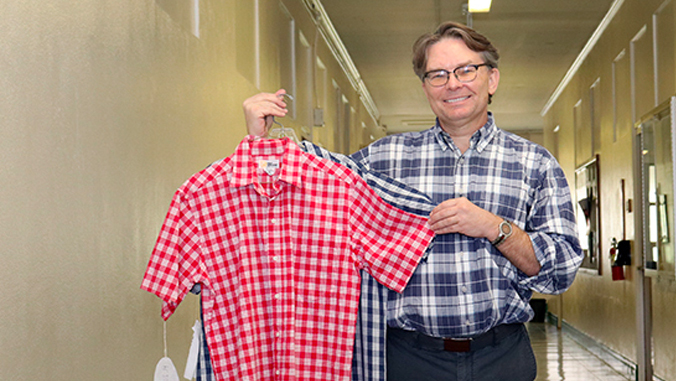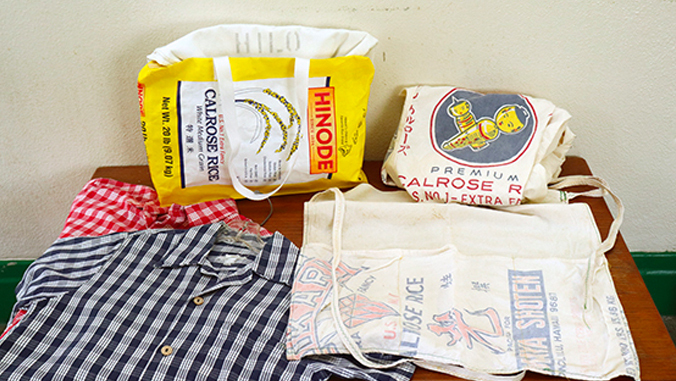
Although Hawaiʻi is known for iconic Aloha shirts and muʻumuʻu, Professor Andy Reilly from the University of Hawaiʻi at Mānoa’s College of Tropical Agriculture and Human Resources’ (CTAHR) Department of Family and Consumer Sciences believes that palaka and rice bag clothes could be next in line to becoming a worldwide phenomenon in fashion.
With humble beginnings in plantations across the islands, rice bag clothing designed by Japanese immigrants and the nostalgic checkered-print palaka fabric are deeply embedded in Hawaiʻi’s history. Once embraced as the unofficial uniform of plantation workers, palaka and rice bag clothing have resurged in popularity in Hawaiʻi and have even made their way onto the world stage in recent years.
“Hawaiʻi is rich with clothing history that tells the story of the people of Hawaiʻi and has influenced the global fashion industry.”
—Andy Reilly
“We are just at the beginning of seeing a major adoption trend in palaka and clothing inspired by rice bags—and the stories of the people who wore them before they were a fashion item will really impact that,” said Reilly.
Reilly aims to share the stories of palaka and rice bags and track how these fabrics have shaped the people of Hawaiʻi. His upcoming research project details the history of fashion in our state, and you can be a part of telling stories about this rich history.
“I am interested in researching the stories and histories of clothing in Hawaiʻi that has not received as much attention as other garments, such as the Hawaiian shirt,” said Reilly. “Hawaiʻi is rich with clothing history that tells the story of the people of Hawaiʻi and has influenced the global fashion industry.”
Still, much remains to be learned about the significance of the fabrics to the people who wore them in the past. Reilly is determined to understand how palaka and rice bag clothes have transformed from being a plantation worker’s attire to becoming a fashion statement and symbol of Hawaiʻi’s history.
“Palaka and rice bag clothing did not start out as fashion—they were fabrics used to make clothing for laborers, or out of necessity, as in the case of rice bags when fabric was limited,” said Reilly. “Recently, palaka has been marketed as the fabric of Hawaiʻi and I’m curious to learn how a European cloth imported to Hawaiʻi has achieved that status.”
Share your story
Reilly is gathering information from those who wear or remember palaka and rice bag clothing. If you or someone you know has a story to tell, contribute to Reilly’s study by contacting him at areilly@hawaii.edu or (808) 956-5061.
Read more at the CTAHR website.


